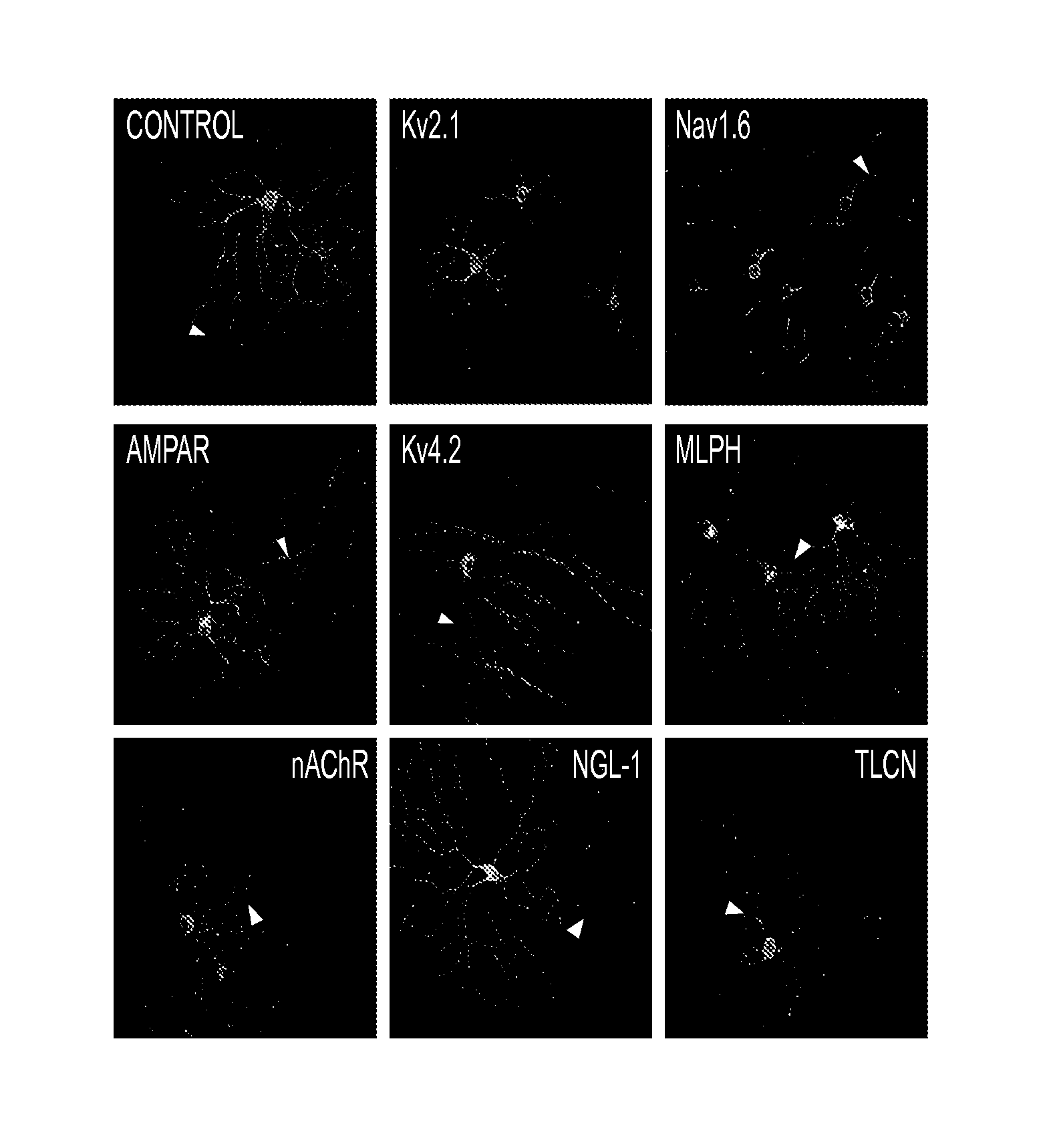AAV-mediated subcellular targeting of heterologous rhodopsins in retinal ganglion cells
a heterologous rhodopsin and subcellular targeting technology, applied in the field of molecular biology and medicine, can solve the problems of severe visual impairment, no effective treatment or cure, complete blindness, etc., and achieve enhanced spatial control and specificity, enhanced contrast, and light sensitive
- Summary
- Abstract
- Description
- Claims
- Application Information
AI Technical Summary
Benefits of technology
Problems solved by technology
Method used
Image
Examples
example i
Transgene Expression in Different Cellular Sites or Compartments
A. Materials and Methods
Viral Vectors:
[0200]Adeno-associated virus serotype 2 (rAAV2) cassette carrying a channelopsin-2 and GFP (Chop2-GFP) fusion construct (Bi, A. et al. Neuron 50:23-33 (2006); WO2007 / 131180) were modified by inserting subcellular sorting motifs at the 3′ end of GFP (or, if no reporter is present, at the 3′ end of ChR2 or HaloR. As described above, viral vectors carrying the transgene of ChR2-GFP-(motif) with a hybrid CMV early enhancer / chicken (β-actin) promoter (CAG) were packaged and affinity purified at the Gene Transfer Vector Core of the University of Iowa.
Design of the vectors was is described above.
Animal and Viral Vector Injection:
[0201]3-4 adult C57BL / 6J mice aged 1-2 months per construct were used for the study. The mice were anesthetized by intraperitoneal injection of ketamine (120 mg / kg) and xylazine (15 mg / kg). Under a dissecting microscope, a small perforation was made with a needle i...
example ii
Physiological Responses of Cells Expressing ChR2
[0211]Studies were conducted (data not shown) in which the RGCs transduced by vectors comprising ChR2 and the Kv2.1 motif (center-targeting), which indeed showed enhanced expression in the center (Soma, proximal dendritic, were tested for electrical responses to light stimuli. A light slit was used to move a light along the cell, and recordings were made where the cell responded by depolarization. The responsiveness of such cells were enhanced compared to those of controls (transduced with vector not containing the sorting motif) indicating a close correlation between the histological evidence for site-specific expression of a transgene (GFP) and spatial organization of a transgene similarly introduced (ChR2). These results confirm the utility of this approach to evoking improved light responsiveness with organization reflective of normal retinal function (spatial specificity) in cells treated using the present methods.
[0212]The refere...
PUM
| Property | Measurement | Unit |
|---|---|---|
| molecular weights | aaaaa | aaaaa |
| molecular weights | aaaaa | aaaaa |
| molecular weights | aaaaa | aaaaa |
Abstract
Description
Claims
Application Information
 Login to View More
Login to View More - R&D
- Intellectual Property
- Life Sciences
- Materials
- Tech Scout
- Unparalleled Data Quality
- Higher Quality Content
- 60% Fewer Hallucinations
Browse by: Latest US Patents, China's latest patents, Technical Efficacy Thesaurus, Application Domain, Technology Topic, Popular Technical Reports.
© 2025 PatSnap. All rights reserved.Legal|Privacy policy|Modern Slavery Act Transparency Statement|Sitemap|About US| Contact US: help@patsnap.com



